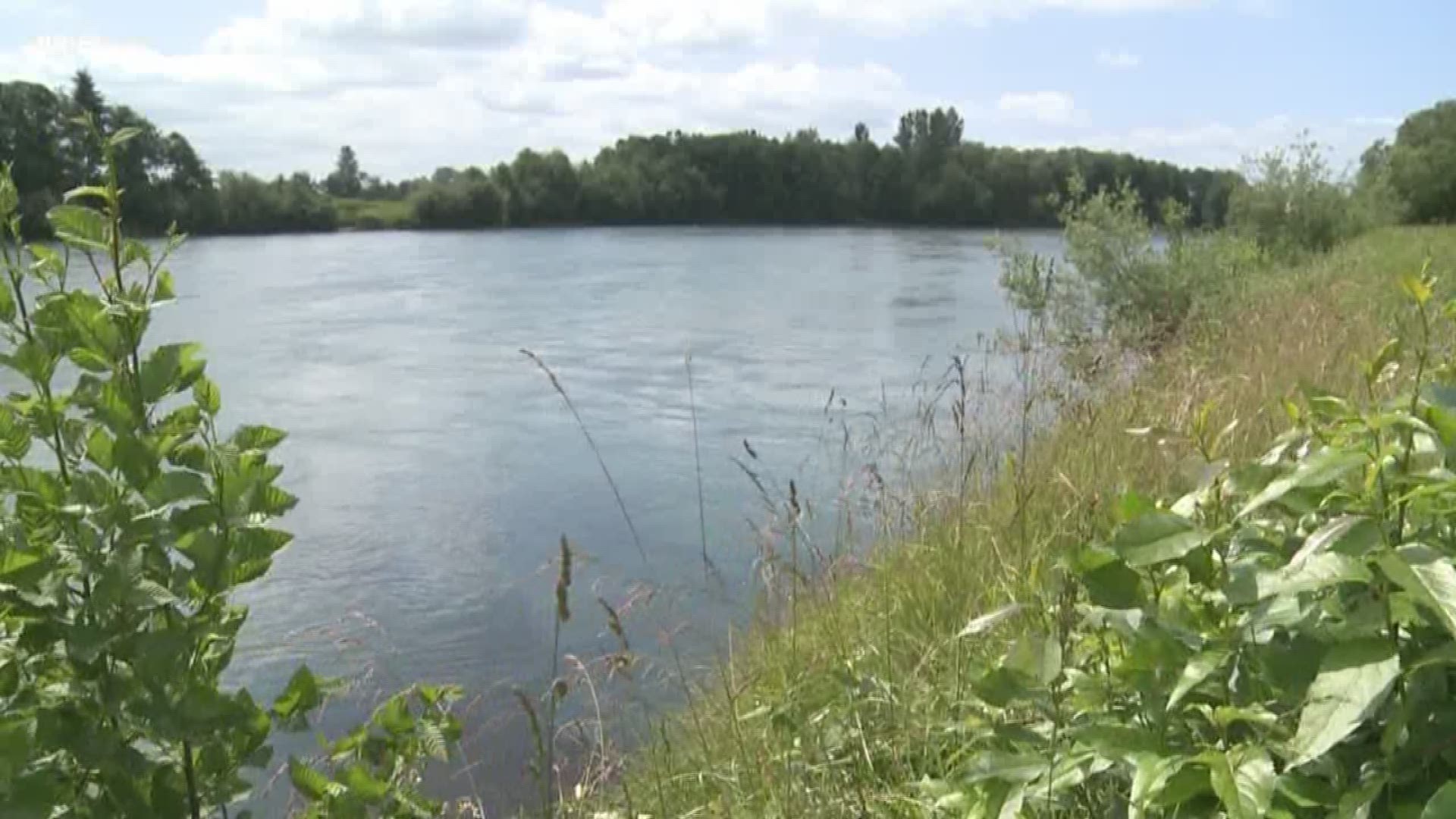MOUNT VERNON, Wash. — The Skagit River is one of Puget Sound’s most important waterways for salmon, but there’s an ongoing debate about how to protect it.
Over the last century, the tree cover along the river has disappeared due to development and farming. The lack of shade has contributed to an increase in water temperature, according to both the Washington Department of Fish and Wildlife and the Department of Ecology.
"In 2004, the Department of Ecology determined that the tributaries in Skagit were too warm," said Swinomish Tribe Chairman Brian Cladoosby. "The Skagit is the only river in the lower 48 that has every species of wild salmon still spawning and its tributaries. It produces 1/3 of the wild salmon in Puget Sound."
Cladoosby and other leaders of the Swinomish Tribe are pressing legislators to change requirements for the number of land buffers required along the river. They want the state to enforce zones of trees and vegetation between 100 and 200 feet wide.
Half of the tributaries need it to protect salmon that are dwindling in number, Cladoosby said.
The Swinomish Tribe believes Ecology has a legal duty to prevent and control non-point source pollution, like temperature, and argue that voluntary programs have been insufficient.
"There are some very, very successful programs out there that show that when they do plant these trees along these tributaries, it does, in fact, cool down the streams, so the salmon have a better chance of surviving," Cladoosby said.
The challenge is that many of these tributaries run through farmland. Farmers are concerned a push for state land purchases puts them in an unfair situation, giving up tens of acres of land while other critical issues facing salmon could keep runs from recovering.
"So, 150-foot buffers for us. If you have a 40-acre field that has a stream going through it, that would basically wipe out that entire 40-acre field," dairy farmer Dwayne Faber explained. "One hundred fifty-foot buffers a mile long is 20 acres on each side. It’s a huge amount of volume of land. For every mile of land, we would have 18 acres that would get taken away out of farmland, out of production, and we would not be able to use that to support our farms and our families in Skagit County."
Faber and others who oppose state enforcement of buffer zones call it a land grab.
"To have local food we need to have farms that are in the area that are sustainable and able to run their farms in the most efficient ways possible," Faber said. "Having regulation like this, or land grabs like this, it’s going to make farmers less competitive to our peers outside the Skagit Valley."
While the government will pay farmers for their land, Faber said it won't make up for lost productivity in the long-term. That hasn't stopped some farmers from choosing to do so.
"We have seen farmers be very successful in Skagit Valley who have done exactly that to help cool those stream temperatures, but we still have 50% of the streams that are in need of help," Cladoosby said.
According to the Department of Ecology, elevated water temperatures, bacteria, and nutrient imbalances are depleting dissolved oxygen, affecting many parts of Puget Sound and its tributaries.
"Buffers on agricultural lands along streams can be one part of multi-faceted strategies to help with these problems. We’ve worked to encourage farmers to participate in voluntary programs that improve stream habitat and protect waters from polluted runoff," said Department of Ecology spokesperson Larry Altose.


